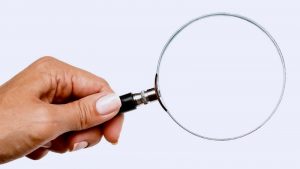Helpful Hints for Parents
Lice are insects that live in human hair (not animals). Their goal in life is to feed on your blood and lay eggs (about 6/day). Lice are brown to black in color and CANNOT jump, fly or hop. They CAN crawl from head to head or hitch a ride on objects such as combs, coats, hats or scarves. (So – no sharing!) Lice will usually die within 24-48 hours off of a human host, the egg or nit can survive off a host about 10 days. It takes 7-10 days for the eggs to hatch and then another 7 days for the female to be able to lay eggs. Unchecked, a female louse can live for about a month and produce MANY (about 400) nymphs that will eventually grow into egg-laying adult lice. Having lice does NOT have anything to do with personal hygiene/cleanliness. Lice infestation is an annoyance, not a disease; however, infections can result from scratching open the scalp with “germy” fingers.
Most people, but not all, experience scalp itching from the saliva the lice injects into their scalp. This is the only “symptom” of an infestation. Confirmation of lice is by exam for the eggs or live lice. The eggs or nits are very small oval sacks which the lice “glue” to the hair shaft. One should use a bright light and a magnifying glass to check for lice and their eggs. Dandruff or dry scalp flakes are sometimes mistaken for lice, but these can be easily removed from the hair, whereas the nits cannot. Sometimes a live louse can be seen, but they crawl quickly from light so are often missed during the exam. ALL cases of lice must be reported to the school nurse upon discovery. Students will be checked throughout grade levels upon reports of active lice cases.
Most lice are killed by using a pediculicide shampoo such as Nix or Rid, however, these products are only 99% effective on the eggs, hence the district’s “no nit” policy. This means ALL eggs or nits MUST be removed from the hair before the student can return to school. This process involves combing through the hair with a metal-tined comb after the shampoo has been used. It often takes hours to comb through the hair and it is usually necessary to pick out individual nits the shampoo leaves behind. It is suggested that before using the lice shampoo, the student’s hair should be shampooed with a “cleansing” shampoo (such as Prell) to ensure the best effect by the lice shampoo. Upon return to school, students with confirmed lice MUST see the school nurse before returning to class to ensure complete removal of all eggs from the hair. Applying a non-pediculicide such as mayonnaise, olive oil, or Vaseline in an attempt to “suffocate” lice has no proven scientific benefit.
Besides treating the child, the home must also receive attention. In the home, all furniture and carpets should be vacuumed – there are commercial sprays that can be applied, however, the benefit of their use is in question. Thorough washing and machine drying (for a minimum of ½ hour on hot) of all bedding and used clothing (worn in the previous 7 days) is critical. If any objects in the person’s environment cannot be washed, they should be bagged for a minimum of two weeks to ensure any lice or nits on them are dead. Car seats should be vacuumed or wiped down as well. Combs, brushes and hair clips should be soaked in hot water (above 130 degrees) for 10 minutes.

